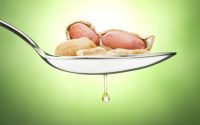What is Corn Oil?
Corn oil is a type of oil made from corn germ, which is the embryo of the kernel. This type of oil is considered extremely suitable for frying foods, and it is often used in the production of margarine. It is also used in some soap and salve preparations as well as in some inks, insecticides, and even some products used in creating rustproof surfaces. This type of oil may even be used in some pharmaceutical processes.
One of the reasons this oil is considered so good for frying is that it is resistant to smoking. It has a very high smoke point, which essentially means that it is unlikely to smoke until it reaches an extremely high temperature. Likewise, corn oil is less prone to discoloration than some other types of oil.
Besides frying, there are numerous food uses for corn oil. For example, this type of oil is often used for salad oil and is sometimes blended with other types of vegetable oils. It can be one of the primary ingredients in margarine as well as an ingredient in butter blends, mayonnaise, and some types of salad dressings. It is often used in a wide range of prepared foods as well. For example, it can be an ingredient in everything from French fries and potato chips to baked goods and frosting.
Corn oil is extracted from corn germ. Each corn kernel is surrounded by a whitish, yellowish coating, which is referred to as the outer husk of the kernel. The corn germ is located near the end of the kernel and within a starchy substance called the endosperm. It is this part of the kernel that contains most of the oil, which is processed to make corn oil. There is, however, a smaller amount of oil in the endosperm as well.
The process used to produce corn oil is referred to as wet milling. It involves softening and separating the kernels. After being separated from the other parts of the kernel, the germ is dried and pressed to extract the oil. This gets most of the oil out, and then a solvent is employed to extract the rest of it. Finally, this crude oil goes through a refining process to prepare it for bottling and sale. There are a few steps to this process, which involves degumming, the removal of free fatty acids, wax removal, color lightening, and deodorization.


